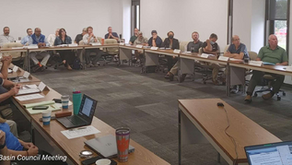Why Are You Wasting Infrastructure Money By Not Using Monte Carlo Analysis?
- JD Solomon
- Sep 19, 2022
- 3 min read
Updated: Mar 15, 2023

Understanding the total cost of ownership is a fundamental principle of asset management of facilities and infrastructure. However, all of our knowledge is about the past. All of our decisions are about the future.
Monte Carlo analysis is our best tool for bridging our knowledge of the past with future uncertainties.
Monte Carlo analysis calculates the probability of outcomes by running multiple simulations using random variables. Analysis using Monte Carlo simulations strongly aligns with funding forecasts for facilities and infrastructure, where thousands of assets vary in cost and decay rates by orders of magnitude.
The power of most first-generation models using Monte Carlo simulations lies more in the insights than the absolute values of the forecasts.
Facility and Infrastructure Applications
All infrastructure assets deteriorate with time and use. To maintain the effectiveness and value of an asset, renewal work should be performed periodically. When the asset has reached the end of its reliable life, it should be replaced.
At the heart of an asset management program is the effort to preserve the existing system's performance and reliability by anticipating future renewal and replacement (R&R) needs and ensuring that adequate and timely funding is planned into the capital improvement program (CIP).
Asset Management Systems Need a 20-year Forecast
According to the Institute of Asset Management, asset management involves balancing costs, opportunities, and risks against the desired performance of assets to achieve an organization's objective. Asset management is the art and science of making the right decisions and optimizing value delivery. A common objective is to minimize the whole-life cost of assets. Still, there may be other critical factors such as risk or business continuity to be considered objectively in this decision making.
More simply, you are not really doing asset management if you do not know your lifecycle costs and sensitivities. Monte Carlo analysis is the preferred method to address the many associated uncertainties.
Insights Gained
1. Data Quality (result)
Asset lists, asset conditions, and replacement values are all required to perform the forecast. In one recent example, the data attributes were fully populated but the pipe material indicated was not available when associated with many of the pipe install dates (PVC pipe was not manufactured in the 1930s and 1940s). In two other recent examples, the unit price had been installed rather than the total replacement costs, thereby making the particular asset classes look inconsequential; however, when corrected, both asset classes were at the top of the priority list.
The bottom line is that you may think you have quality data but will not know for certain until you use it in an application. The best way to test your data quality is the 20-year R&R forecast using Monte Carlo simulations.
Establishing life cycle ranges (and distributions) and existing rebuild frequencies also produces an understanding of maintenance approaches.
2. Long-term capital forecasts (or Cone Diagrams)
Critical two-dimensional graph of Funding versus Time, including probabilities
Seek to minimize peaks and troughs
Identify pent-up or deferred requirements and/or need for better data
3. Assets needed for upcoming capital improvement program (lists)
List used to verify whether capital improvement program includes the neediest assets
4. Baseline renewal and replacement frequencies and strategies (table)
Should we modify these? Should we revisit our standard practice?
5. Tradeoffs analysis (tables)
Tradeoffs of debt funding vs. yearly O&M expenditure
Projected capital and O&M funding requirements
6. Sensitivity analysis (Tornado Diagrams)
Financially, what is most important and what is least important
7. Looking at the combined facilities under a single lens (tables)
Provides a well-defined justification and transparent plan in economically challenging, uncertain times.
8. Common understanding by staff (result)
Staff turnover in all industries is high.
More junior-level staff are advancing quickly into middle management roles.
What it Means
An R&R forecast using Monte Carlos simulations is a highly effective approach for structuring facility and infrastructure problems and gaining insights about key inputs. When done properly, an R&R forecast using Monte Carlo simulations improves a decision maker's understanding of risks, business value drivers, and the sensitivities of key decisions. The forecast also provides an understanding of key variables' relevant importance and interdependencies and, in turn, the value of both acquiring additional information and the potential areas for business process improvements.
An R&R forecast using Monte Carlos simulations is essential to support reliability and make risk-informed decisions. You may be making good decisions without this type of analysis, and that may be up for debate; however, if you are not using Monte Carlo simulations to inform your asset management decision making, then it is nearly certain that you are leaving value on the table.
JD Solomon Inc provides program development, asset management, and facilitations services at the nexus of facilities, infrastructure, and the environment. Contact us for more information on developing renewal and replacement forecasts, criticality analysis, and third-party reviews of previous forecasts using Monte Carlo simulations.




Comments